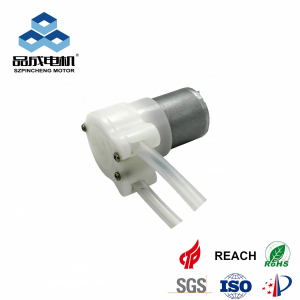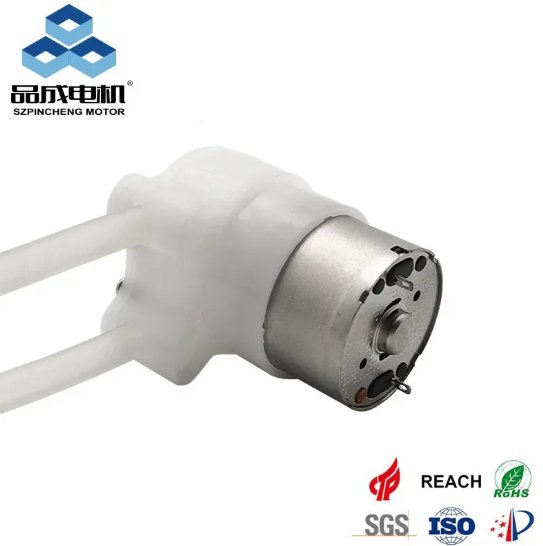The Mini peristaltic pump is renowned for its reliability and simplicity. However, like any piece of equipment, it can sometimes fail to operate as expected. If you're facing a situation where your pump is humming but not moving fluid, or is completely silent, don't worry. Most issues are easy to diagnose and fix.
This comprehensive guide will walk you through the most common reasons why your Mini peristaltic pump is not pumping, with a focus on DIY-friendly solutions for 12v peristaltic pump and water peristaltic pump setups.
1. The Obvious First Check: Power and Connections
Before diving into mechanical issues, always start with the power supply. A 12v peristaltic pump is only as good as the electricity powering it.
- 1、No Power: Is the pump completely silent and motionless? Check that your power adapter is plugged in and switched on. Verify the output voltage with a multimeter if possible.
- 2、Loose Wiring: Inspect all connections between the power supply, any control boards (like an Arduino), and the pump itself. A loose wire is a very common culprit.
- 3、Insufficient Voltage/Current: Ensure your power supply provides the correct voltage (e.g., 12V DC) and enough current (amps) to drive the motor. An under-powered motor may stall or fail to start.
2. The #1 Culprit: Tubing Issues
The tubing is the heart of the peristaltic pump. Most pumping failures are related to it.
- 1、Incorrect Installation (Occlusion): This is the most frequent cause. The tube must be correctly seated in the pump head's channel. If it's not pressed firmly against the rollers, they cannot compress it to create the peristaltic action. Open the pump head and re-seat the tube.
- 2、Worn-Out or Fatigued Tubing: Over time, the constant compression and relaxation cause the tubing to lose its elasticity. A worn tube will not spring back after the roller passes, breaking the suction needed to draw in fluid. Solution: Replace the tubing. This is a consumable part.
- 3、Tubing Blockage: Check that the tubing is not kinked, pinched, or clogged by debris. This can happen both in the intake line (preventing fluid from entering) or the output line (preventing fluid from exiting).
- 4、Wrong Tubing Type: The tubing must have the right balance of flexibility and resilience. Tubing that is too hard cannot be compressed properly, while tubing that is too soft can get chewed up or create an ineffective seal.
3. Priming and Fluid Path Problems
A water peristaltic pump is self-priming, but it's not magical.
- 1、Air Lock or Dry Inlet: If the inlet tube is not submerged in the fluid or contains a large air bubble, the pump has nothing to draw. Ensure the inlet tube is fully immersed in your source liquid.
- 2、Inlet Leak: An air leak at the connection between the inlet tube and the reservoir (or where it connects to the pump head tubing) will suck in air instead of fluid, preventing prime.
- 3、Excessive Suction Lift or Head Pressure: While these pumps can lift fluid, there are limits. Trying to lift water more than a few feet vertically or pushing against high back-pressure can exceed the pump's capability, resulting in little to no flow.
4. Mechanical and Motor Failures
If power and tubing check out, the issue might be mechanical.
- 1、Stalled or Jammed Motor: Debris or a severely misaligned tube can jam the pump head, causing the motor to stall. Listen for a humming sound without movement. Unplug the pump immediately and investigate the obstruction.
- 2、Worn or Slipping Drive Mechanism: In some pumps, a gear or coupling connects the motor to the pump head. If this wears out or slips, the motor may spin but the rollers will not.
- 3、Motor Burnout: If the pump was subjected to constant stalling or was grossly under-powered, the motor may have burned out. You might smell a distinct burnt electronics odor.
Step-by-Step Troubleshooting Checklist
Follow this logical sequence to diagnose your Mini peristaltic pump:
- Listen and Observe: Is the motor spinning? If not, go to Step 2. If it's spinning but not pumping, go to Step 3.
- Check Power:
- 1、Verify power supply is on and connected.
- 2、Check voltage with a multimeter.
- 3、Inspect all wires for damage or loose connections.
- Inspect the Tubing:
- 1、Open the pump head and ensure the tube is installed correctly.
- 2、Check for cracks, wear, or discoloration on the tube. Replace it.
- 3、Look for kinks or blockages in the entire fluid path.
- Check the Fluid Path:
- 1、Ensure the inlet tube is submerged.
- 2、Check for air leaks at connections.
- 3、Temporarily reduce the output height to see if it starts pumping.
- Inspect the Pump Head:
- 1、Manually turn the rotor to ensure it moves freely.
- 2、Look for any foreign object jamming the mechanism.
you like also all
Read More News
Post time: Oct-07-2025




